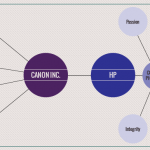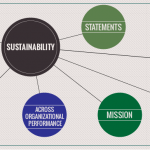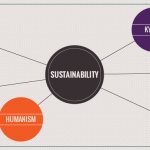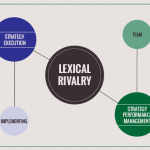Separating strategy formulation from execution questioned in Harvard Business Review
smartKPIs.com Performance Architect update 29/2010
One of the surprise articles in the July-August 2010 edition of the Harvard Business Review (HBR) is ‘The Execution Trap‘, written by Roger L. Martin, Dean of the Rotman School of Management at the University of Toronto and Professor of Strategic Management at the same school. Its publication comes as a surprise as traditionally, HBR has been favoring articles promoting strategy execution and the separation between formulation and execution. The support of the publication in promoting Kaplan & Norton’s ideas over the last 15 years was an important contributor to the ascent of strategy execution as a “buzzword”.
The article clearly states the author’s position right from the tagline: “Drawing a line between strategy and execution almost guarantees failure”. It reviews the recent history of the separation idea, mentioning names of proponents such as Jamie Dimon (now CEO of JPMorgan Chase) and Larry Bossidy (former AlliedSignal CEO). The phrase that encapsulates best some of the challenges in today’s management thinking is: “…[the] doctrine…is as flawed as it is popular. That popularity discourages us from questioning the principle’s validity.”
The pressures of concept marketing in today’s management thinking are illustrated by tracing back the integration idea to 1971, when Kenneth Andrews wrote in his book, ‘The Concept of Corporate Strategy’: “Corporate strategy has two equally important aspects, interrelated in life but separated to the extent practicable here in our study of the concept. The first of these is formulation; the second is implementation.” Gradually the push of the paradigm that separates strategy formulation from execution has gained grounds, pushed not always by sound data from the field, but also by marketing hype.
Two metaphors are used to illustrate the opposing views regarding strategy execution. The mainstream approach is built around the metaphor of the role the mind has in coordinating the human body. Similarly in organizations “thinkers” come up with the strategy and doers “execute”. The alternative metaphor proposed by Martin is the one that compares the organizations with a white-water river, where choices cascade down from upstream to downstream in the organizational hierarchy. This approach would enable more freedom to adapt decisions to the specifics of the environment in which each organizational level operates, all within a larger framework and direction given by the strategy (the river). To me these two opposing views can be associated with mechanistic, command and control thinking in the case of the military execution paradigm and with organic, systems thinking in the case of the interrelated, integrated view of strategy.
A second idea that emerges in the article is recursiveness, the replication of the same structure and approach at a lower level, of the component of the larger system:
“The employee is now not only the brain but also the arms and legs of the organizational body. He is both a chooser and a doer. Workers are made to feel empowered, and the whole organization wins.”
Other elements of systems thinking and the importance of learning can be traced in the article:
“The choice-cascade model has a positive-reinforcement loop inherent within it. Because downstream choices are valued and feedback is encouraged, the framework enables employees to send information back upstream, improving the knowledge base of decision makers higher up and enabling everyone in the organization to make better choices.”
Overall, the article is a valuable contribution to the debate surrounding the benefits of employing a strategy execution paradigm, either at lexical level or management theory level. Due to its constructivist nature, management theory is continuously reshaped by such debates. What stimulates progress is challenging popular beliefs and assumed truisms by continuously analyzing them in the context of contemporary environment characteristics. To me, organizational performance management and performance architecture are more neutral integrating concepts that reconcile the differences between preponents of strategy formulation / execution separation. By raising questions about ideas considered as given, articles such as this one open the door to a reshape of thinking that marked strategy management literature for the last 20 years or so. Martin’s final thoughts at the end of the article are eloquent:
“It’s time to revisit and revise our upstream theory. The business world may be utterly convinced that better execution is the path to greatness, but in truth, a better metaphor would be much more helpful.”
Indeed, it is time.
Stay smart! Enjoy smartKPIs.com!
Aurel Brudan
Performance Architect, www.smartKPIs.com
References
- Andrews K. R 1971, The Concept of Corporate Strategy, Homewood, Ill., Dow Jones-Irwin.
- Bossidy L, Charan R 2002, Execution: The Discipline of Getting Things Done, Random House, Crown Business, New York, New York.
- Martin R. L. 2010, The Execution Trap, Harvard Business Review, July-August, pp.64-71.
Walker, Rob 1992, “Rank Xerox – Management Revolution”, Long Range Planning, Vol. 25, No. 1, pp. 9 to 21

Tags: Aurel Brudan, Harvard Business Review, Performance Architect Update, The Execution Trap






